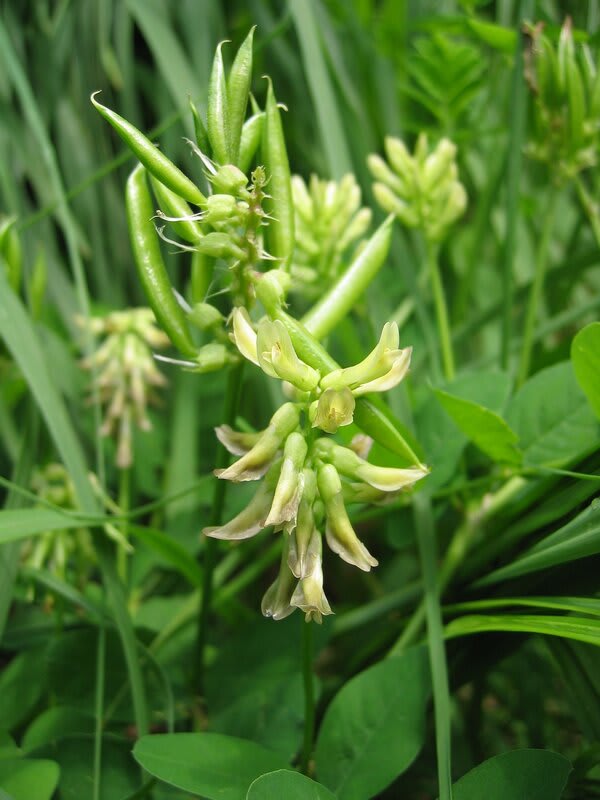Wild Liquorice, False Liquorice, Bastard Liquorice, Sweet Milk-vetch
Astragalus glycyphyllos

🌿 Morphology
🌞 Growing conditions
🌍 Origin and family
🌾 Uses
Warning: Despite the care taken in writing this sheet, it is essential to cross-reference sources before using or consuming any plant. When in doubt, consult a qualified professional
Permaculture uses
While some Astragalus species are used medicinally (e.g., Astragalus membranaceus), Astragalus glycyphyllos is less commonly used. The young shoots and seeds are reported as edible after thorough cooking, but caution is advised as the plant contains potentially toxic compounds. It can be used as a green manure or cover crop due to its nitrogen-fixing capabilities. It may provide forage for livestock, but palatability varies. Not typically cultivated for ornamental purposes.
Permapeople description
A sprawling perennial herb with pale yellow flowers
Botanical description
Astragalus glycyphyllos is a perennial herbaceous plant belonging to the Fabaceae family. It grows up to 1.5 meters tall, with sprawling or ascending stems. The leaves are pinnately compound with 9-17 oval leaflets. The flowers are pale yellow or greenish-yellow, arranged in axillary racemes. The fruit is a glabrous pod, containing several seeds. The plant spreads via rhizomes, forming patches or clumps. It prefers well-drained soil and sunny locations.
Companion planting
As a nitrogen-fixing plant, it can be a beneficial companion to non-leguminous plants. It may compete with other plants for resources if allowed to spread aggressively. Its compatibility with specific crops or other plants requires further observation, but generally, plants benefiting from increased nitrogen levels will be good companions.
Propagation methods
Propagation can be achieved through seed sowing in spring or autumn. Scarification of the seed coat may improve germination rates. Root division is also possible in spring or autumn. Stem cuttings can be taken in the summer, although rooting success may vary.
History and traditions
Historically, Astragalus glycyphyllos has been used in some traditional medicine systems, although less extensively than other Astragalus species. It has been investigated for potential anti-inflammatory and anti-oxidant properties. Its roots were sometimes used as a substitute for liquorice root, though its taste is not as strong or sweet. Its role in traditional herbalism is relatively minor compared to other plants.
Usage calendar
Flowering occurs from June to August. Seeds ripen from August to September. Planting is best done in spring or autumn. Pruning, if desired, can be carried out after flowering to maintain shape or control spread.
